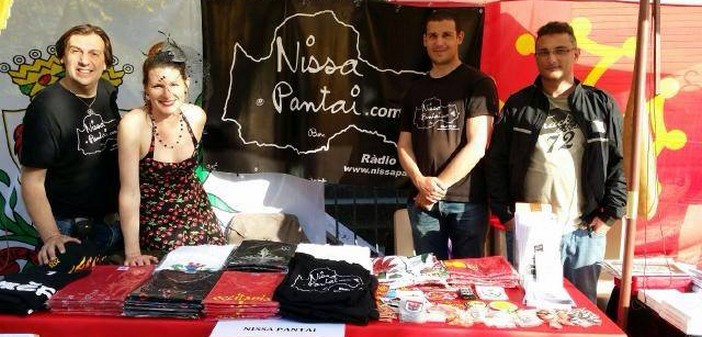The Occitan Cultural Center País Nissart e Alpenc is organizing the 18th Occitan Festival to help the residents of Nice and its former County understand that the Oc language, which appears in the form of the Nissart and Alpine dialects, is a treasure.
On October 11th, the linguistic space of Occitania and its more than 3 million speakers will be highlighted!
This language has not respected the (often changing) borders of the County of Nice; it can be found in the alpine valleys of Piedmont, in a large part of the Principality of Monaco, but also in Provence, the lower Dauphiné, Languedoc, Auvergne, Limousin, and Aquitaine.
All the teachers who teach Nissart or Alpine in schools have diplomas or certifications in Occitan/Oc language. The Academy of Nice provides Oc language courses in Nissart, Alpine, or Provençal to 2,406 secondary school students (2014/2015) through its teachers.
Throughout all of Occitania, there were 62,215 students of Occitan/Oc language in primary and secondary education (Education Nationale figures from January 2013), making it the second most taught “regional” language after Alsatian (72,765 students). Breton (34,718 students) is third, followed by Corsican (33,820 students), Creole (16,758 students), Basque (13,696 students), Catalan (12,757 students), and Tahitian (12,615 students).
The 2 bilingual Nissart/French classes in Nice are part of the network of Occitan bilingual classes. There are also the associative Calandretas bilingual schools and colleges.
The University of Nice-Sophia Antipolis also has a Department of Occitan Language, led by Sylvain Casagrande, a singer from the group Rauba Capèu and director of the association Nissart Per Tougiou.
All this to say that this language has a future, thanks to its students, but also its speakers, estimated between 1.5 and 3 million, spread across 4 European countries: France, Italy, Catalonia, and Monaco.
What is the symbol of this language? In fact, there are 2 symbols for this language: the Occitan Cross (originating from Forcalquier) in yellow on a red background and the 7-pointed star created by Frédéric Mistral for the Felibrige, representing the 7 founders of the movement and also the 6 provinces of Occitania and Catalonia (Catalan being very close to Occitan).
For the record, the Congress of the Felibrige (La Santo Estello) will meet in Nice in May 2016 with representatives from all Occitania’s Maintenance districts.
The festival will also pay homage to the Nissart writer Jousèp Rosalindo Rancher (1785-1843), our founder Joan-Pèire Giraud (1928-2014), and Joan-Pèire Belmon (1952-2015).
This festival highlights the Nissart, Alpine, and Provençal dialects, which represent an invaluable heritage for us, needing to be used to survive.
The Oc language, which includes Nissart and Alpine, is present in a region called Occitania, with a population of 15 million (across 4 states: France, Italy, Spain, and Monaco), including 3 million speakers (from Bordeaux to Menton), and manifests in different dialects: Auvergnat, Limousin, Vivaro-Alpine, Gascon, Languedocian, Provençal, and Nissart.
On the program:
At 2 pm, place Pierre Gautier, the parade of the big head of Jousèp-Rosalindo Rancher will begin, accompanied by the fifes and tambourines of Lo Cepon de Vence and the Nissart and Occitan flags, arriving at the Gag theater.
At 3 pm, music from Lo Cepon de Vence, homage to Rancher, Belmon, and Giraud, and Nissart songs by Henry Scatena.
Following, Concert by the group BARBALUCOU from Bendejun and Coarasa.


